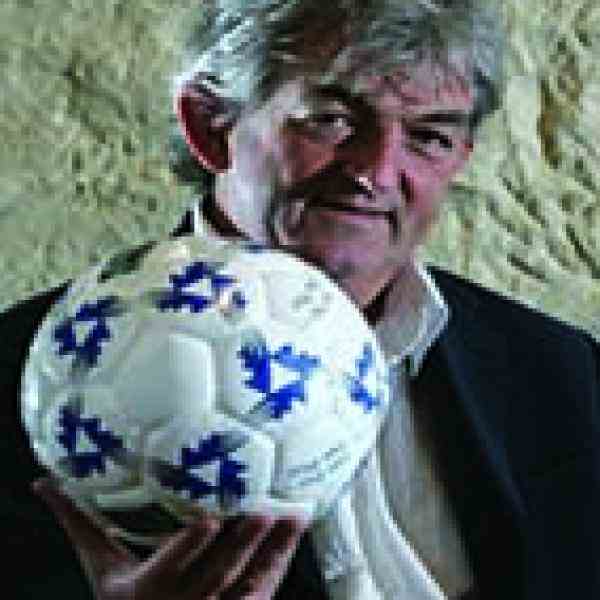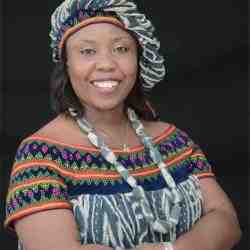Introduction
Mel Young has dedicated over two decades to tackling homelessness in Scotland, in the UK and around the world. As serial entrepreneur, his most recent achievement is catalysing the global use of football as a means to engage and empower homeless people to change their lives, and successfully bridge them into a sphere of inclusion.
The New Idea
Mel Young pioneered the Homeless World Cup to transform the impact football could have on the lives of homeless people around the globe. When the Homeless World Cup first launched in 2003, seventeen countries participated with any homeless football team they could source. Now in its tenth year, the world-class tournament has initiated, supported, and catalysed a wave of professionalised homeless leagues around the world, with finalists selected to represent their countries. Mel works with National Partners in 70 countries every year, touching some 250,000 homeless football players along the way. These National Partners provide access to the professional services needed to ensure the transformative impact football can have on individuals’ lives takes root – be it educational, employment, health or legal advice.
Having dedicated his adult life to working with homeless people, Mel knows that the root cause of homelessness is not finding housing, but changing a mentality developed over years of marginalisation from society. He realised football was a particularly powerful tool because of its very nature of inclusivity: a football game in your local area is easy entry-level engagement for homeless people, particularly the most hard-to-reach young men in their teens and twenties. Mel’s initiative puts homeless people at the centre of the solution, teaching them skills and empowering them to improve their own situation. Playing sports fosters life skills: working as a team, regaining a healthy attitude towards physical and mental well-being, self-esteem, confidence, and most importantly a deep feeling of inclusion. After the tournament, players who have been involved at any level go on to find homes, return to their families, and become mentors and ambassadors for homelessness in their respective countries.
When Mel developed his idea in 2001, sport for social change was already being delivered to children on a small scale in a number of countries. However, Mel’s ambitious replication of The World Cup format from professional football is now giving all street football activities a deeper meaning. For the homeless players, football is no longer considered a service provision – a hand-out – but is a link to a higher purpose and a genuine commitment. Mel also uses the Homeless World Cup to create a powerful environment where homeless people experience genuine respect and inclusion with the rest of society. Therefore, Mel holds the tournament’s operations to the highest standards, accepting no less than professional sponsorship, football kit, coaching, referees, and media coverage. The effect is two-fold. Homeless players are honoured, respected, and applauded for the first time. Additionally, the public are allowed to discover, without pity or fanfare, that the homeless have the same human qualities as professional football players or any of us. The Homeless World Cup has brought sport for social good into the mainstream, bridging to the professional world of football, influential global brands, and the public.
The Problem
Homelessness is a persistent worldwide problem, affecting an estimated 100 million people around the globe. In the UK alone, over 2,000 people sleep without shelter on any particular day, with a lasting impact on their life chances but also the rest of society: one person living on the streets for a year costs the UK £100,000. Homelessness is caused by a whole range of complex and interlinked factors, and a solution is about much more than providing housing to individuals.
Government services and charities offer a multitude of services to assist with health, psychosocial, addiction and housing needs. However, one in four ex-homeless people are unable to sustain a tenancy due to a number of challenges which arise at every step of a homeless person’s re-integration journey. Firstly, it’s a challenge to build relationships with hard-to-reach beneficiaries who have gained a mentality of mistrust from past experience. Then, homeless people often live chaotic lifestyles; transitioning to stable housing and employment requires a level of self-discipline and routine they may be unused to. Finally, after successfully connecting to short-term housing and basic health needs, there is an acute challenge to remain in that housing and build stability in the long-term for a positive future. This requires tackling the root cause of chronic homelessness: a feeling of loneliness, marginalisation from society, and lack of hope and purpose. Ultimately, we must find ways to help those at risk of homelessness in shifting their mentality: building a network of sustainable support and social ties, and re-gaining a sense of confidence, purpose and inclusion with mainstream society.
At the same time, since the 1990s, sport has begun to be used as a highly effective and flexible tool for achieving a range of community development aims – led by Ashoka Fellows such as Johann Olav Koss of Right to Play. By its very nature, sport is about easy participation, inclusion, and values like teamwork, dedication, and fairness. A growing body of evidence is proving the results. The UN has found that sport offers the most cost-effective way to communicate with hard-to-reach groups, influence behaviour, and boost resilience and social inclusion. Evaluation-based evidence shows positive psychosocial effects for relieving trauma, including emotional and social stabilisation and the acquisition of new skills and abilities. Through building lasting relationships with coaches and teammates over time, sports activities can create meaningful pathways into education, training and employment as well as build important social networks.
The new movement’s focus to date has been on children as the primary beneficiaries. However, until the early 2000s only a small number of isolated projects had attempted to link homelessness with playing sport. Without linking to the mainstream and growing a movement, their impact was limited to the short-term and highly localised. Also, they failed to compile an evidence base for impact on adult lives, or share best practice to improve their long-term impact. The most comprehensive analyses of sports for social change programmes to date have concluded that large impact is heavily dependent on the operational details of how sport programmes are delivered to marginalised groups. Therefore there is a real need to measure results, share best practice and learnings, and develop the entire sector.
The Strategy
Mel Young’s mission is to use sport as a catalyst for social change globally, giving homeless people the necessary skills, social support and mentality needed to take back control of their lives. His strategy to achieve this revolves inextricably around the annual Homeless World Cup event. In addition, Mel employs the annual event to leverage resources globally and catalyse a movement of homeless people playing football around the globe, every day of the year – which is where he believes the deepest impact is to be achieved. Mel’s strategy therefore focuses on leveraging the tournament effectively, massively increasing the potential of all organisations to deliver effective sport programmes to the homeless, and affecting global policy and public perception.
Mel Young’s flagship event, the Homeless World Cup, is a key pillar of his strategy, enabling him to mobilise leaders, media and the public at an international level, attract funding, and spark a global movement. Initially, Mel imagined the Homeless World Cup would be a one-off event. However, research conducted six months after the first event concluded that a majority of the homeless players had returned home and transformed their lives for the better: entering education or employment, locating a home, training as coaches, or re-uniting with their families. Subsequent independent evaluations have consistently shown over 90% of players have a new motivation in life. 77% change their situation in a practical way: of which 45% now have a full time job, 43% have stable housing, 40% have gone into full time education and 56% of those who had drug or alcohol dependency issues have addressed those problems successfully. Mel therefore decided to establish the Homeless World Cup as an annual event. Partner countries bid to be the host location every year, and are then responsible for raising local funding to cover costs, primarily from city- and national-level government institutions and major corporate sponsorship deals. Both local and head offices work together to gain passports and visa arrangements for all homeless participants – many of whom previously lacked any form of personal identification. Each player is allowed to participate only once to ensure maximum reach, and players’ ages range from 16 to 75, with an average age in their early 20s. A separate Women’s World Cup was established in 2008 to overcome challenges Mel observed when teams were previously required to be mixed gender.
To date, the Homeless World Cup has sparked the establishment of over 75 new local organisations around the world, organising regular trainings, annual trials and tournaments, and linking to additional support services. Each country selects their team to participate in the Homeless World Cup in different ways, and maintains a high degree of independence as long as they pass quality standards and policy requirements as National Partners. The tournament has also mobilised a host of committed volunteers who are involved year after year in giving pro bono legal and support services, refereeing, etc. Although the Homeless World Cup tournament has a critical role to play, its impact for changing the system relies on the daily football it unleashes at a local level, year-round.
The next step in Mel’s strategy is therefore to massively increase the numbers of homeless people involved in football programmes and the numbers of lives transformed globally. To do this, Mel formally established a Homeless World Cup Foundation in 2005, responsible for supporting the daily grassroots work of organisations which have started using football to tackle homelessness. Mel has now built a trust-based network with over 70 official National Partners, spanning every continent. He has chosen to cap the size of the global office to minimal levels, focussing resources instead towards local partners. By creating a network, Mel hoped to create efficiency through sharing resources centrally. A primary concern was to unleash local partners’ abilities to focus on delivering effective football on the ground, and assist with the logistical burden of designing measurement, communication tools and attracting funding. The Foundation therefore invests in its National Partners, firstly by helping them to “tell their story” of social impact by designing new tracking tools and collecting global impact data from across the network. Mel has also brokered relationships with major universities to conduct more in-depth independent analyses of local work. Once the required baseline data is in place, the Homeless World Cup Foundation assists local partners to access funding, either by directly funding the most early-stage local organisations, or by using its globally-recognised brand to broker introductions. In addition, Mel established a for-profit subsidiary, 100% owned by the Homeless World Cup Foundation, to generate sustainable income for the Foundation and its Partners from related work, such as football events and sponsorship.
The final part of Mel’s strategy of working with National Partners is to leverage resources by Partners directly sharing best practice and successful innovations with each other. Some National Partners are now in advanced, self-sustainable positions including England, Holland, Australia, Chile and the USA. The Homeless World Cup Foundation is helping spread their success stories through sharing information online, holding regional meetings and organising inter-country exchanges. For example, Chile has developed a social enterprise model where nation-wide media coverage to the public has unleashed funding from corporate sponsorship, which covers the costs of 33 social football programmes across Chile as well as building dedicated 7-a-side football centres. Holland has coach training programmes and strong systems in place to bridge their players to additional social services and non-profit partners once trust is established. In England, the model is based on linkages to professional football academies and league teams, who provide coaching resources, potential for scale, and facilities free of charge. By codifying these practices into “modules” and sharing them internationally, Partners in earlier stages of establishment are free to develop the most appropriate and flexible strategy for their local context. Through its global network of players and National Partner Organisations, the Homeless World Cup directly impacts 250,000 homeless football players every year. Mel hopes to bring this figure up to one million homeless lives affected by 2017.
The final part of Mel’s strategy is to tackle the negative portrayal of homelessness at every level: affecting public perception, policy and linking homelessness to the mainstream. Since 2003 he has built a global network of changemakers and champions of this field, spanning public policy, professional sporting networks and the media. At the level of public awareness, the Homeless World Cup event attracts 168,000 spectators from the public. The tournament is free to attend, and Mel’s team selects the most high-profile, high-visibility location in every host’s city centre in order to attract diverse audiences. These have included beside the Eiffel Tower in Paris, on Copacabana Beach in Rio, and the Zocalo central square in Mexico City. The Homeless World Cup’s National Partner “Street Soccer USA” now independently holds its own annual tournament in Times Square. In Brazil, the Homeless World Cup opened up a public conversation about homelessness, which had previously been dismissed by politicians as a “non-existent” issue in the country. A survey developed by independent researchers has been used since 2008 to track spectators’ perceptions regarding homelessness, revealing that over 90% of spectators stated the Homeless World Cup had changed their own opinions about homelessness, and that it breaks down negative stereotypes about the homeless more widely. Even more telling is the fact that in all cities where the tournament is held, people who are homeless report improved relations with the public.
Mel has also used his background in journalism to gain unprecedented media exposure of the event to reach the mass public: 450 journalists attend the event and report from every major media outlet. Various documentaries have been made and broadcast through international television. In addition, Mel Young has built partnerships with influential global brands and leaders to increase the global movement of sport for social change: supporters include UEFA, the United Nations, Nike, Telmex Foundation and global ambassadors Eric Cantona, Didier Drogba and Rio Ferdinand. Mel has structured these mainstream partners to provide multiple layers of impact: providing the Homeless World Cup and its National Partners with funding, sponsorship, global public exposure, and in-kind contributions spanning airline travel, legal support for visa applications, accommodation, food and beverage. Finally, Mel has built up a network of influencers at the top levels of public policy. Champions include leaders within the FIFA World Cup, the UN and Desmond Tutu. A meeting with Australia’s Prime Minister last year resulted in passing new legislation on sports for social change and dedicating $1.8 million for its development across the country. Mel has routinely advised the UN’s programme on Sports for Development and Peace and was a founding member of the World Economic Forum’s Sports Agenda Council.
The Person
Mel Young grew up in Scotland with a lifelong passion for social justice and equality of opportunity. He started his career as a journalist, working in a large housing estate in the outskirts of Edinburgh where unemployment was high and poverty led many residents to feelings of marginalization and despair. Homelessness was becoming a rising problem. He became the editor of a local newspaper, but felt deeply frustrated that everyone he wrote about was calling for change, without the necessary leaders emerging to deliver credible solutions.
During a visit to London Mel came across the Big Issue London when it had just launched. He was immediately taken by the simple idea that the homeless could gain an income and interact directly with the public by becoming vendors of this pioneering magazine. He decided to bring the model to Scotland, but the London magazine declared it was still too early for regional expansion. Mel therefore decided to start his own magazine and model from scratch, and co-founded The Big Issue Scotland in 1993 with a community development worker called Tricia Hughes. The magazine reached a monthly circulation of 40,000 and is still running today.
The impact this work had on vendors’ lives surpassed even Mel’s expectations. He resolved to help spread the model throughout the world and collaborated to set up the International Network of Street Papers (INSP). As President, he helped the network scale to reaching sixty street papers being sold on every continent, with a combined annual circulation of over 30 million, helping 100,000 homeless and long-term unemployed people throughout the world every year.
As part of this work, Mel travelled around the world meeting homeless people and those working to support them from every background. Although the political and social contexts for homelessness varied between different countries, Mel began to realize that the homeless suffered from the same emotional challenges worldwide. He found that homelessness does not describe simply not having a roof over ones’ head, but isolation in its deepest sense - being excluded from communities, families, friends, the mainstream economy, and emotional support.
When Mel travelled to Capetown for an INSP conference in 2001, the energy and transformative impact on the participating street paper staff in the room was tangible as they shared stories, resources and supported each other. It struck him that getting the chance to meet and connect with others in your situation had the potential to not only impact newspaper editors, but the homeless as well. Mel spoke with Harald Schmied, from the Austrian homeless paper Megaphone and they started brainstorming possible ways to bring homeless people together. Discussing existing barriers such as travel documents and language they felt slightly defeated, until the idea of football came up. Mel recognized its potential immediately: football was a shared language and as a team sport had enormous power to connect people with each other. Mel and Harald then worked to launch what their colleagues considered a crazy idea. They divided responsibility between them, with Harald taking care of the planning on the ground in Austria and Mel managing the international end, including getting the teams together and obtaining the necessary resources to actually get the players to Graz. Mel soon stepped down from the INSP to become full-time founding CEO of the Homeless World Cup as Harald had to pull back his work slightly due to health concerns. The first tournament took place in 2003, and they have been held annually ever since, changing location every year.




